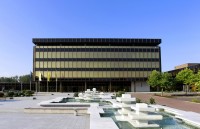Der SOL20 Terminal Computer der Firma Processor Technology kam im Juni 1976 auf den Markt und zierte das Juli-Cover der berühmten Zeitschrift Popular Electronics. Bis dahin war der Altair 8800 nur der einzige PC auf den Markt.
Entwickelt und designed wurde der SOL20 vom Computeringenieur Lee Felsenstein. Felsenstein wollte zunächst nur eine intelligente Tastatur bauen, um die Eingabe von Daten nicht - wie beim Altair - mühselig über Kippschalter durchführen zu müssen.
Heraus kam jedoch ein vollständiger Computer mit integrierter Tastatur.
Diese bahnbrechende Entwicklung war lange Standard, so etwa beim Apple II oder Commodore.
Der SOL20 kostete zusammengesetzt ca. 2130 US$, als Bausatz 996 US$.
Er basiert auf einen Intel 8080 Prozessor und hatte 1K bis maximal 64 K RAM.
en

